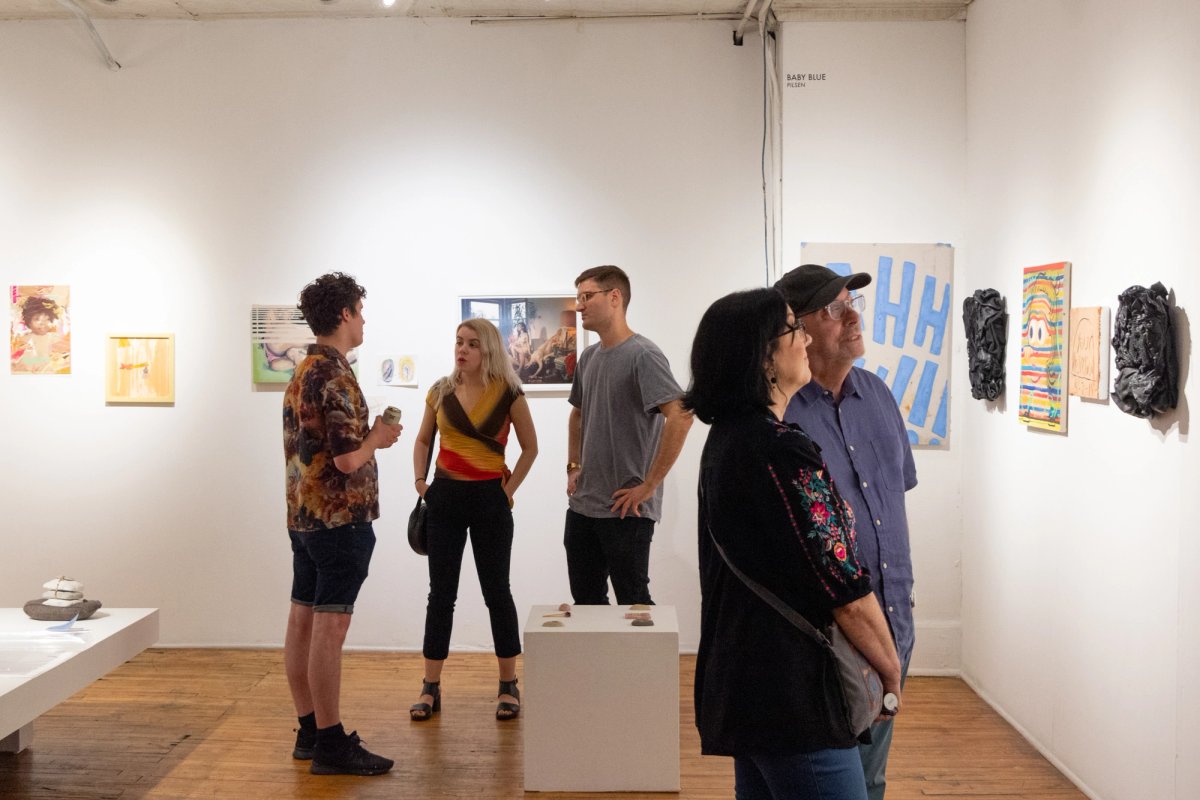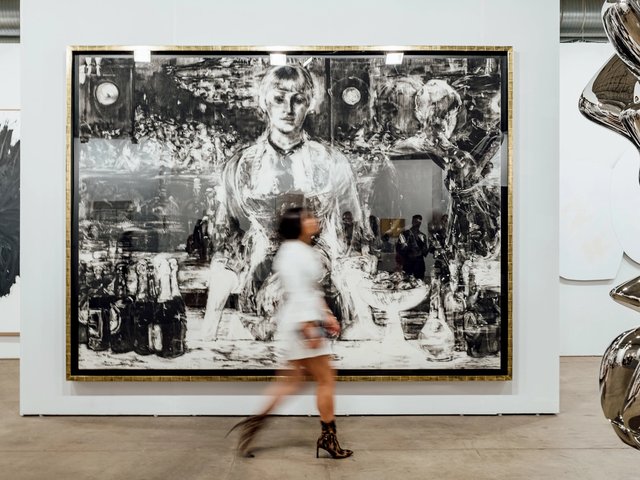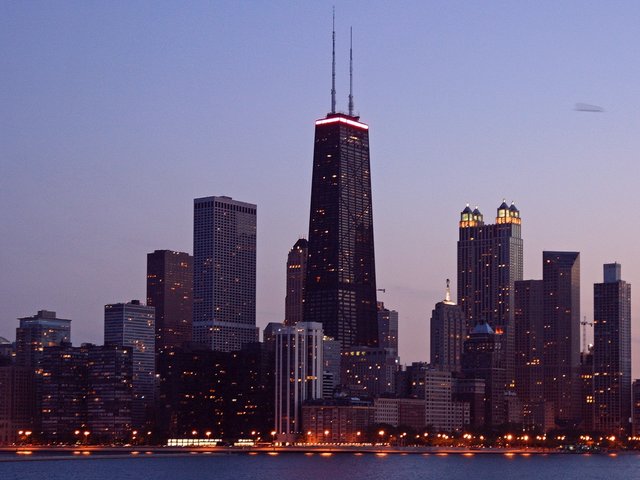While most art fairs only last a few days, Chicago’s Alternative Space, a collaborative commercial exhibition platform now in its second edition (until 28 July), runs for an entire month in order to allow smaller dealers the chance to show work without the usual fair frenzy and expensive overhead.
As its name suggests, all ten exhibitors are alternative spaces, which have long flourished in the Windy City. These include artist-run white cube galleries like Tiger Strikes Asteroid—which has locations in New York, Chicago, Los Angeles and Philadelphia—as well as smaller apartment galleries like Chicago’s Apparatus Projects. Works are affordably priced, with palm-sized sculptures by Anna Showers-Cruser for $65 to a mirrored mosaic by Sylwia Kusiak for $9,000.
The fair is a love letter to the city’s renowned DIY art community, which, though precarious, remains fiercely supportive. Founded by Alma Wieser, the director of Chicago’s 22-year-old Heaven Gallery, where Alternative Space is held, the event was first launched in 2016 in response to rapid gentrification of the city’s surrounding Wicker Park neighbourhood. Even if less regular, it predates Condo, the London-based gallery-share initiative that now has editions in cities around the world; the New York edition (until 26 July) boasts a roster of 38 participants and includes blue chip names such as Petzel and Metro Pictures.
Though the aims of the two events are somewhat the same—to provide smaller galleries a low-cost alternative to expensive art fairs—Alternative Space is not looking to scale-up the way Condo has. Instead it is meant to spotlight the power of alt-spaces, Wieser says, noting that the fair plays to the strengths of small, alternative spaces in an increasingly stratified marketplace, namely their nimbleness. “We can do a fair in two weeks by emailing friends,” she says, allowing exhibitors more financial flexibility since they do not have to commit to the fair months in advance.
“I’ve done Expo Chicago—you spend a bunch of money to be there, and you have to sell so much to break even,” Wieser says. “That’s not really for us.” The cost of participation is very low, especially since there is no fee to exhibit—dealers simply bring works for a 10-ft-wide wall space. They do not have to pay to staff their displays, either, as Heaven handles sales, much like the Object & Thing model introduced in New York this May. Artists receive 60% of a sale; their gallery splits the rest evenly with the host.
Increasingly, Chicago is seeing more alternatives to the eight-year-old Expo Chicago, which is drawing an increasingly high calibre of dealers. The Other Art Fair, an artist fair, debuted last year; the New Art Dealers Alliance (Nada) will enter the market in September with the inaugural edition of Chicago Invitational.
For Gareth Kaye, the co-director of Apparatus Projects, which is showing works by Holly Murkerson and Sarah Reynolds, Alternative Space is “a valuable way to partake, in a certain degree, in the [city’s] expanding market but with a critical eye”.
Ultimately, Alternative Space is about recognising the labour necessary to small galleries—and the underrepresented and emerging artists they often represent—in a high-stakes ecosystem, especially one that is rapidly professionalising like Chicago’s as more commercial fairs move in. Indeed, several galleries that participated in the inaugural edition of the fair have since shuttered. Heaven, still fighting to keep its space, is fundraising to buy its building to create a permanent art centre.
“This is about camaraderie and coming together as a makeshift coalition,” Kaye says. “We’re trying to maintain an ethos of self-preservation before we get priced out.”




